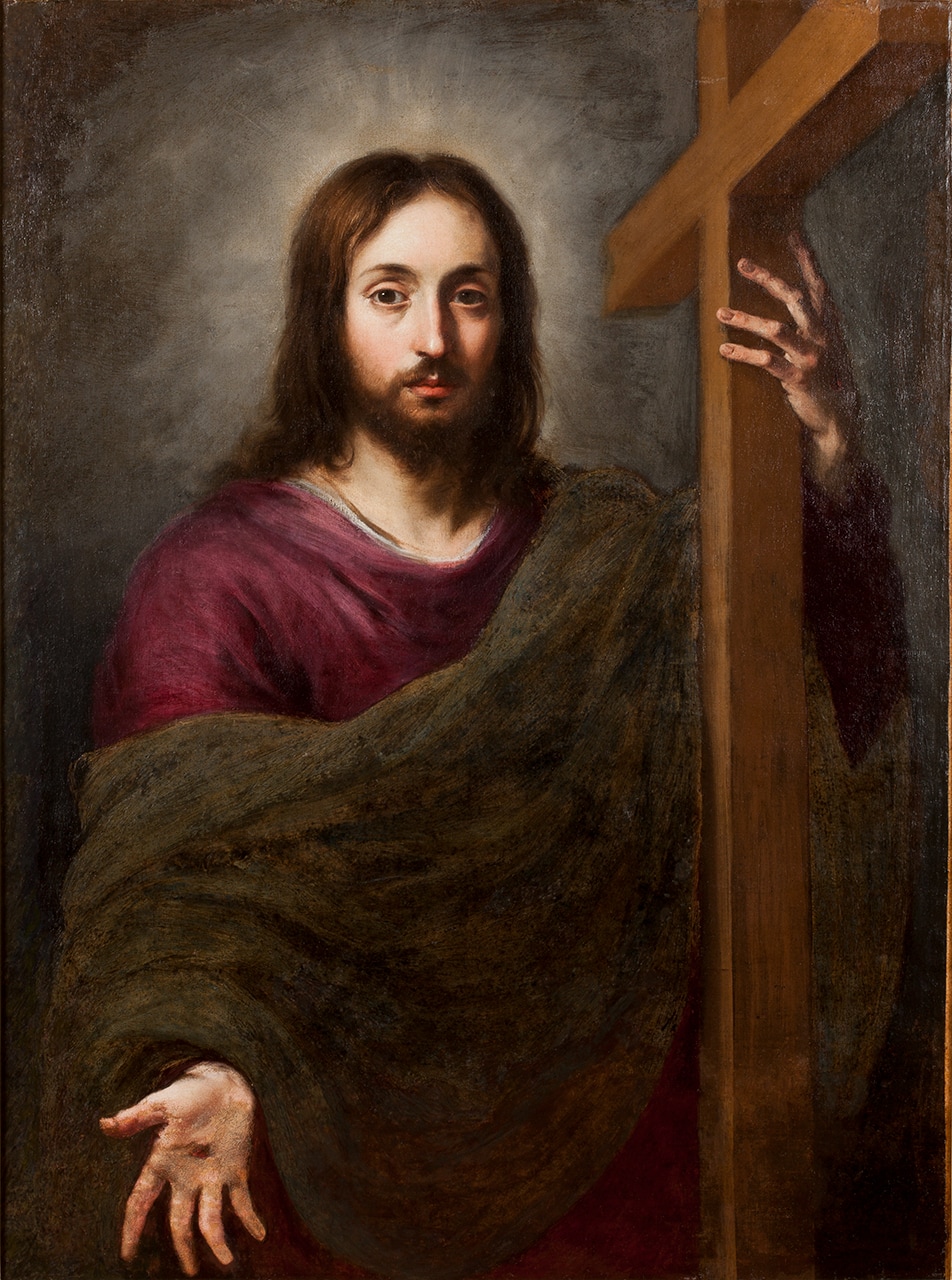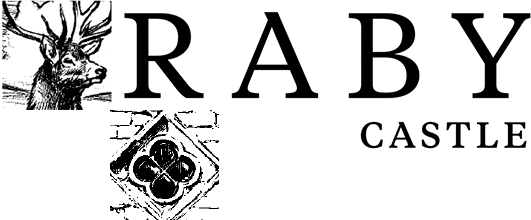
Christ the Saviour
The dual nature of Christ—both fully human and fully divine—has always provided artists and their patrons with a dilemma. In the earliest traditions of representation, the emphasis of depiction falls predominantly on questions of divinity. Figured as lordly and abstract, Christ seldom appears in relation to the instruments of his torture and martyrdom, but is instead envisioned as an unfathomable and inaccessible presence, a force beyond human comprehension. Yet by the Middle Ages, and most notably as a result of the preaching of mendicant orders such as the Franciscans, the polarity had all but been inverted. Depicted as a frail human being, Christ became a more open and accessible figure, his suffering on the cross regarded no longer as a terrible and alienating stigma, but as a mechanism for reaching outwards towards believers in the hope of stimulating a form of emphatic or affective engagement predicated on the sentient experience of suffering and pain.
The Raby Castle Christ the Saviour builds precisely on this tension. Envisioned on the one hand as a majestic and ethereal presence, Christ stands erect before the observer, exuding an impression of incomparable and unattainable divinity. Yet by the same token, other details, notably the cross by his side and the wounds in his hands, serve ineluctably as references to human frailty. Recalling the fact that he was thirty-three years old when sentenced to death, his facial features are partly those of a man in the prime of life and partly those of a figure whose beauty, which in turn echoes that of heaven, remains beyond human comprehension. As his darkly compassionate eyes stare outwards towards the observer, he succeeds in conveying an impression of pathos—a recognition of the unparalleled violence of his suffering on the cross—while at the same time offering an insight into the certainty and magnificence of celestial salvation. Audiences become trapped as a result by a range of competing imperatives, aspiring to sympathize with his example while at the same time remaining conscious both of the magnitude of his suffering and of the impossibility of direct or active emulation.
Possibly produced in Seville at some point during the seventeenth century, the Raby painting was attributed at sale to Bartolomé Esteban Murillo (1617–82), but is now believed to be the work of a different artist. Clumsy attempts at restoration have further complicated the question of attribution. Its iconography, which is broadly traditional, can be traced to prints produced by the Wierix brothers, who were active in the Low Countries (then a part of Habsburg-ruled Spain) in the late sixteenth and early seventeenth centuries. A notable analogue is the treatment of the subject by Francisco de Zurbarán (1598–1664), now in the Prado, where Christ, rather than extending his palm outwards towards the viewer, adheres more closely to convention by raising one hand in blessing while resting the other on a globe—a reference to his dominion over the subjects of the world.
 Click to zoom and pan
Click to zoom and pan
...
Your feedback is very important to us. Would you like to tell us why?
We will never display your feedback on site - this information is used for research purposes.
Artwork Details
Title
Christ the Saviour.
Artist
Unknown artist (seventeenth century).
Date
Seventeenth century.
Medium and Support
Oil on canvas.
Dimensions
87 x 63 cm.
Marks and Inscriptions
None.
Acquisition Details
Acquired at Christie’s, London, by Henry Vane, Second Duke of Cleveland, 1853, as by Murillo.
Previous Owners
King Louis-Philippe of France, before 1853, and inventoried in the Gallerie Espagnole in the Musée du Louvre, Paris; first displayed in the Iglesia Parroquial de San Andrés, Seville.
Institution
Raby Castle, Staindrop, Darlington.
Bibliography
Pablo Pérez d’Ors, Del Greco a Goya: obras maestras del Museo del Prado (Ponce: Museo de Arte de Ponce, 2011), pp. 116–17;
Howard Coutts, Andy Beresford, & Clare Baron, ‘Some Collectors of Spanish Paintings in County Durham’, in Spanish Art in County Durham, ed. Clare Baron & Andy Beresford (Bishop Auckland: Auckland Castle Trust, The Bowes Museum, & Durham University, 2014), pp. 94–98.
